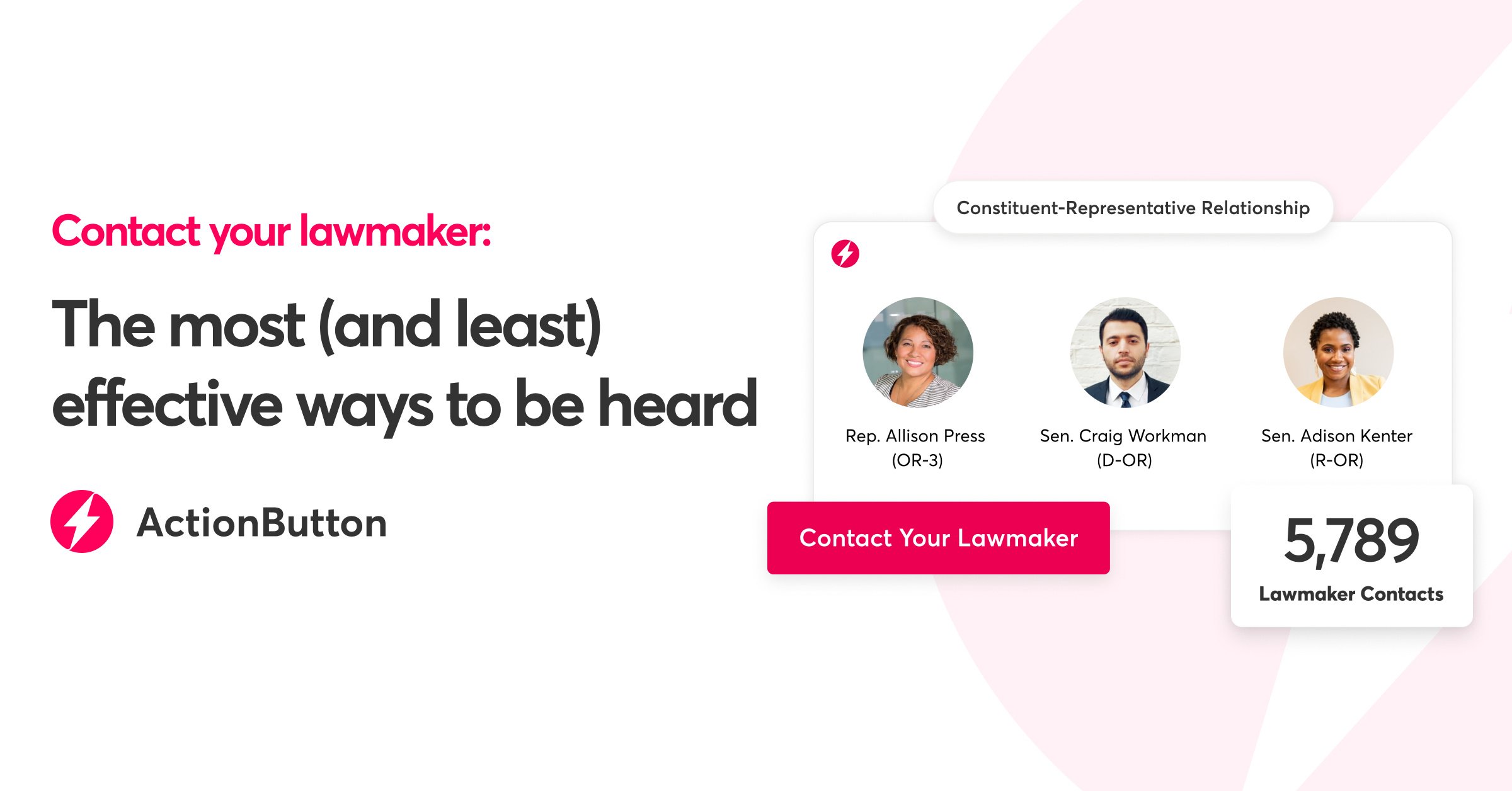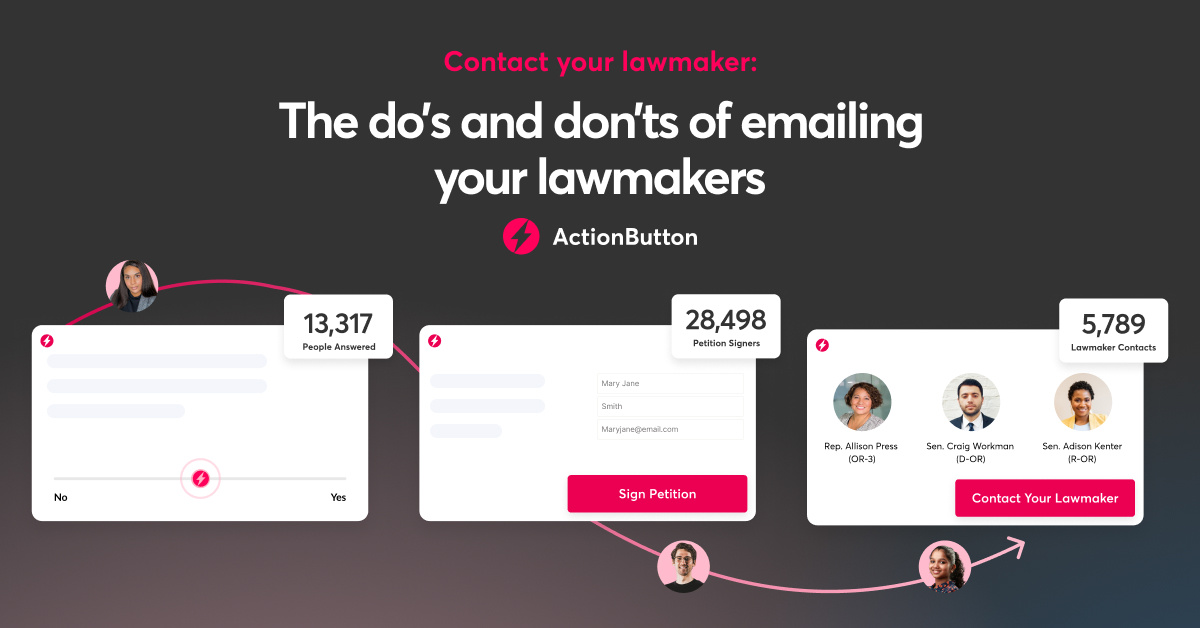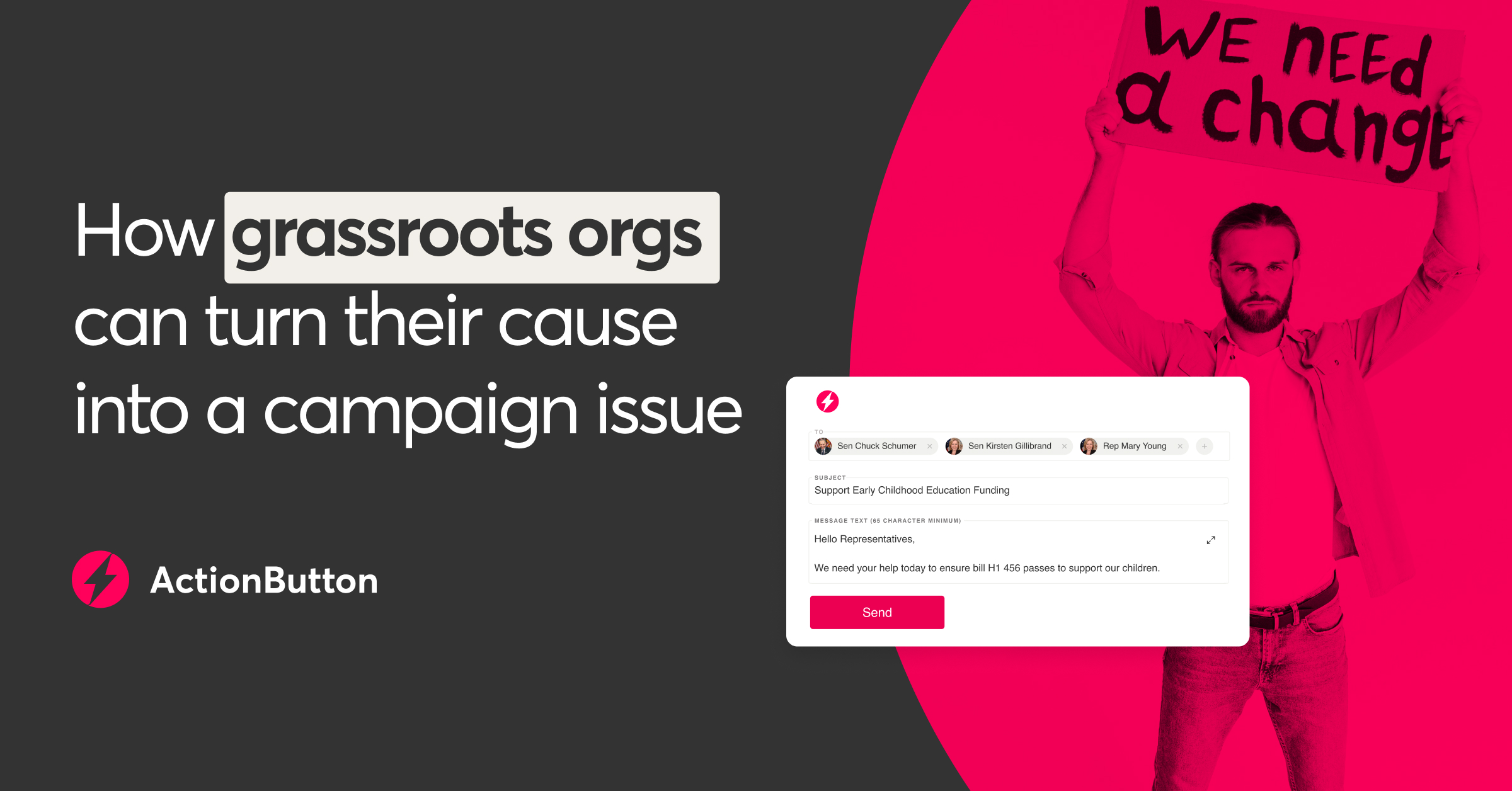The do’s and don’ts of emailing your lawmakers
Your community's voice matters in the political process. Equip them to use it to advocate for the issues they care about by providing clear...
2 min read
.jpg) Taylor Green
:
Apr 9, 2025 9:47:47 AM
Taylor Green
:
Apr 9, 2025 9:47:47 AM

Ever wonder if your elected officials actually read those emails or listen to your voicemails? We surveyed elected officials across America to uncover the most effective ways to make your voice count on the issues you care about. The results might surprise you—and they'll definitely help your message rise to the top of the stack.
The basic unit of influence in a democracy is the vote. But it’s limited. It only happens once an election cycle, and you can’t add a note to your vote with the reasons you support or don’t support an elected official.
For everything between elections, constituents have to rely on direct communication methods – calls, emails, social media, town halls, and community organizing.
So, how do you cut through the noise and make sure your message is heard?
We reached out to lawmakers at every level of government across the United States to find out their communication preferences. While the results may not be surprising, they are all highly relevant data points in getting your message to the top of the stack.
Of the 30 elected officials we reached out to for our informal survey, 70% chose not to respond. 2% said they preferred phone communication over all others when responding to constituent demands. These officials prefer voice conversations, ostensibly because they can be more sure a human is on the other end in this age of AI, when text is so easily generated by chatbots such as ChatGPT.
On the other hand, elected officials are busy people. That’s why 8% of respondents prefer email communication, so they can automatically sort their messages by topic and see which bills constituents are most fired up about en masse. This relieves pressure on their staff, who don’t have to do the manual work of categorizing incoming communications.
Finally, and most importantly, we found that a majority of elected officials who responded (67%) consider email and phone communications equally impactful. That group represents 20% of the total number contacted. Most lawmakers were clear that the medium did not matter when it came to receiving feedback from constituents. Hearing what issues matter most to you was the vital thread.
Whichever method you choose, the most important thing is to make your voice heard!
If you’d like to run this experiment yourself to find out which method of communication your elected official prefers, simply call and ask the staffer the following:
When a constituent reaches out to your office, do phone calls or emails carry more weight in influencing decisions? Or is there another preferred method of communication?
So go ahead and reach out to your elected officials and find out how they like to be contacted, and check out the Do's and don'ts of emailing your lawmaker for more context. You may choose to thank them for any particular legislation you found helpful for your community, or point out something they could have done better. Elected officials are people, too, and hearing from a real person about what matters to them is the most effective way most of us have to exert influence.

Your community's voice matters in the political process. Equip them to use it to advocate for the issues they care about by providing clear...
.png)
It can feel like laws appear out of nowhere. But legislation doesn’t just happen. It’s shaped by the people who show up.

Candidate filing deadlines are closing. Some have already passed. Now is your moment. Even small, scrappy grassroots orgs can make sure your cause...